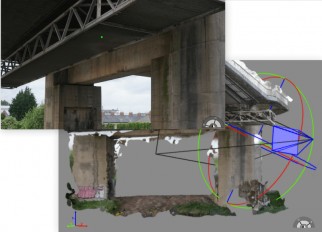From Aerospace to Railways: AI Digital Twins Power Up HS1


Sources: prover.com, railuk.com
Want to read more like this story?

Monitoring infrastructure via Digital Twins
Jun, 26, 2020 | NewsInfrastructure monitoring can be completely retrofitted utilizing a concert known as Digital Twins....
Digital twins of buildings can contribute to the reduction of environmental carbon emissions
Sep, 18, 2023 | NewsBuildings are responsible for approximately 40% of greenhouse gas emissions in the United States. A...

Civil Engineering in the Digital Age: Top Innovations Shaping the Future
Jul, 16, 2024 | NewsThe world of civil engineering is experiencing a significant digital transformation. Innovative tec...

3D Scanning & AI: The New Era of Rail Infrastructure Maintenance
Feb, 19, 2025 | NewsThe Dutch railway network, with over 7,000 track switches and crossings, faces constant wear and te...

Digital Twin Infrastructure: Building Safer Bridges with AI
Aug, 20, 2025 | NewsArtificial intelligence is emerging as a powerful tool to improve the safety and resilience of brid...

Data-Driven Construction: The Key to Meeting Global Infrastructure Demands
Feb, 14, 2025 | NewsAs the global population is set to reach 9.7 billion by 2050, the demand for new and upgraded infra...

Civil Engineering News Recap of Ocotber 2024
Nov, 05, 2024 | NewsYou can now find TheCivilEngineer.org's latest news recap video on YouTube, which includes what we...

"Digital Twinning the Built Environment", part of "The future of Infrastructure today!" webinar series
Dec, 20, 2023 | EventLecture date: Friday January 19, 9:00-10:00AM PST "The future of Infrastructure today!” is a monthl...

Building the Digital Highway: Meta’s 50,000km Subsea Cable
Feb, 26, 2025 | NewsMeta has announced its most ambitious subsea infrastructure project yet—Project Waterworth, a 50,00...
Trending

Taipei 101’s impressive tuned mass damper

Characteristics of Load Bearing Masonry Construction

Morocco Implements Landmark Dam Perforation to Combat Water Stress in Marrakech

The Line at Neom faces feasibility reassessment while construction continues

Dutch greenhouses have revolutionized modern farming

Suspension bridge buckles under force of deadly super typhoon in Philippines


